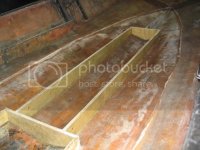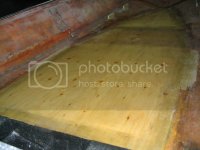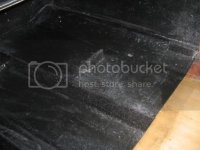Mark
Well-known member
About a year ago I saw a 1986 Starliner on the forum for sale. It was in Florida and I was in Canada, but I decided it was a rare enough find and good enough deal to go for it. Like many of you, I love the Starflight hull, but as a family man prefer the bowriders. I knew it was a project boat but I was still in for a surprise when I met the seller in Nashville. He had started the resto and decided to bail out after he had stripped the hull down. After I hauled the boat 24 hours home and went through the boxes of parts, I discovered it had no deck hardware, no lights, no rubrail, no bowrails, no gauges, no steering wheel, no wiring, no cooler latches, a broken windshield and a bunch of other missing parts. The floor and stringers were completely rotten(which I did know) but there were 13 holes drilled into the balsa core(wet) and 2 of them went clear through the hull and were plugged (sort of) with 1/4" bolts. (Can you spell Caveat Emptor?) The good news was that the rest of the hull, other than being oxidized was in perfect shape. "Light silver black" metal flake is what the factory calls it. This was going to be a big project, not just the labor, but finding all the correct parts to put it back together. If Chris is able to post the pics I'll give you the play by play.











